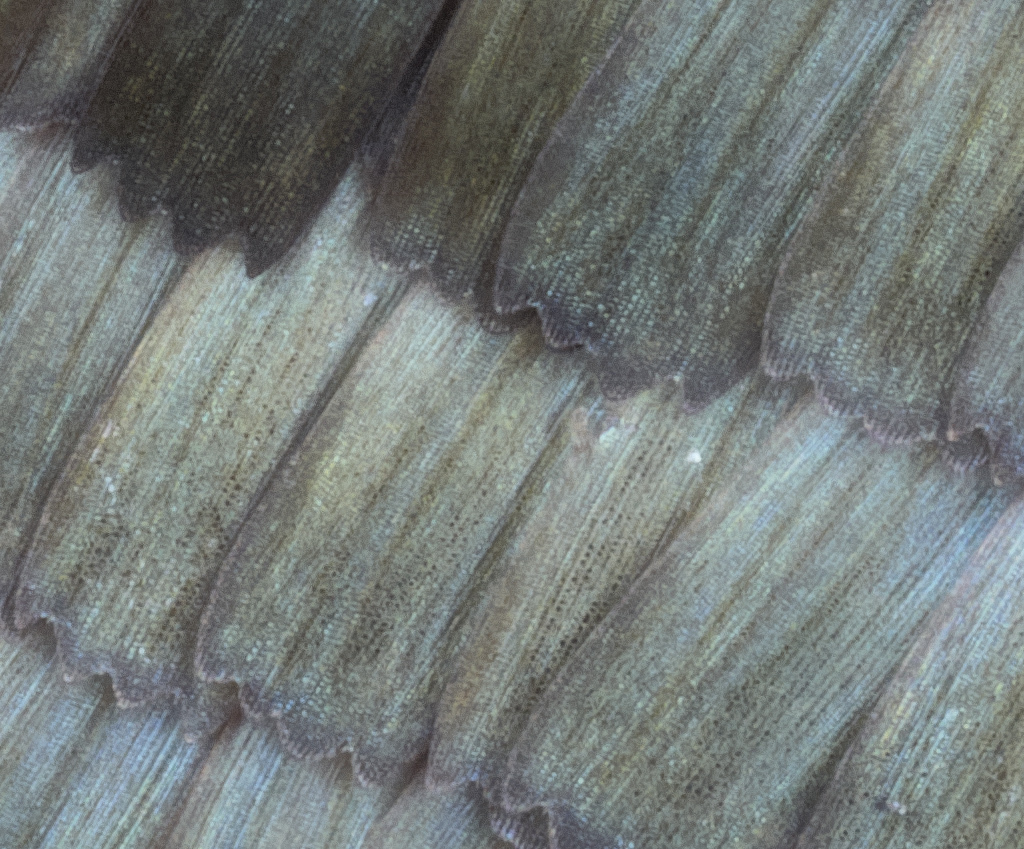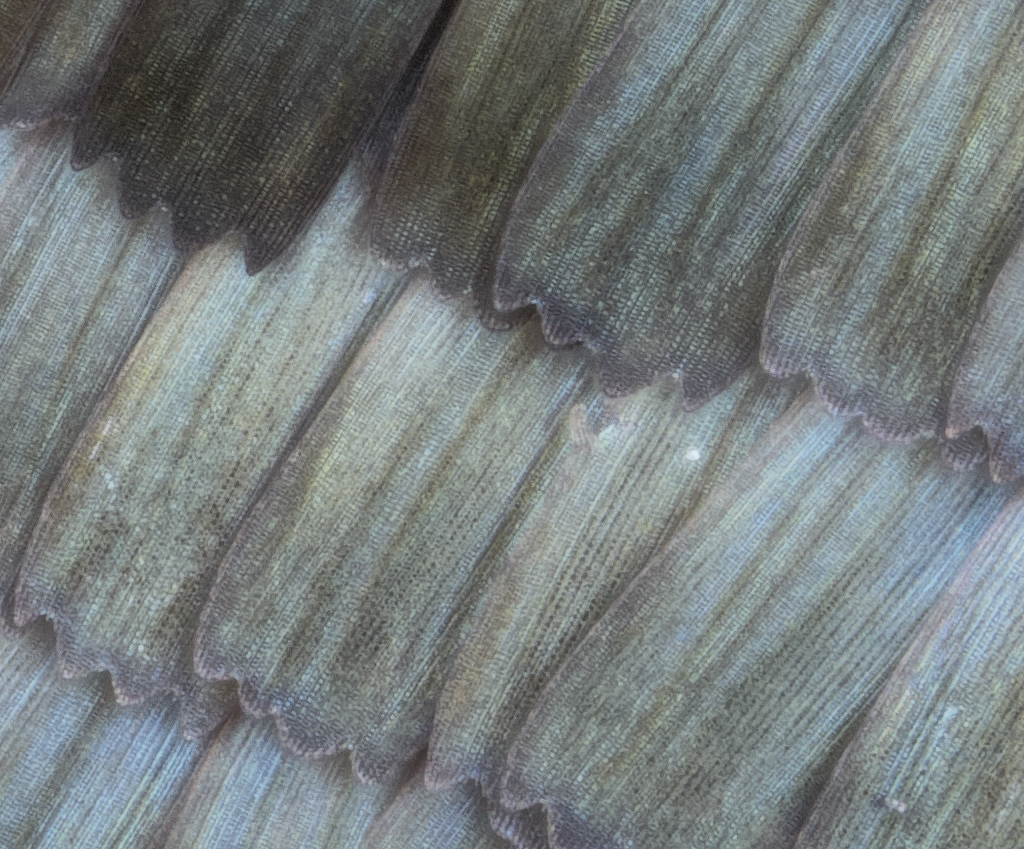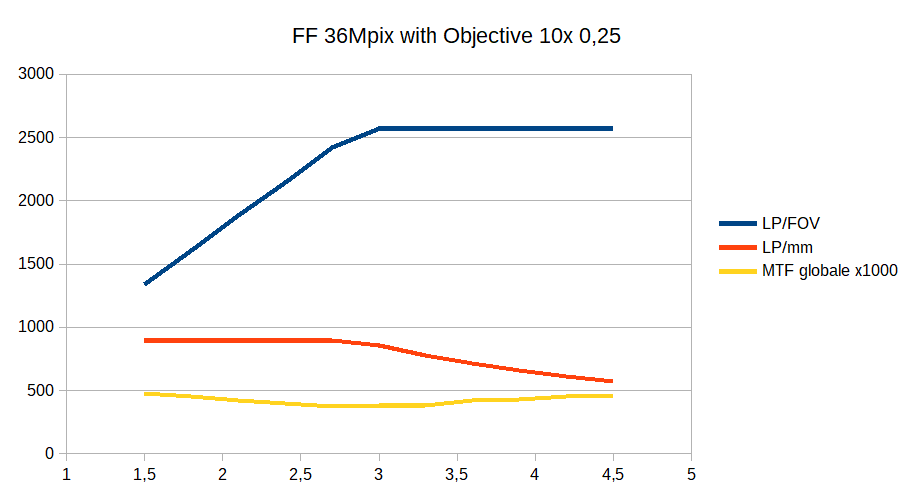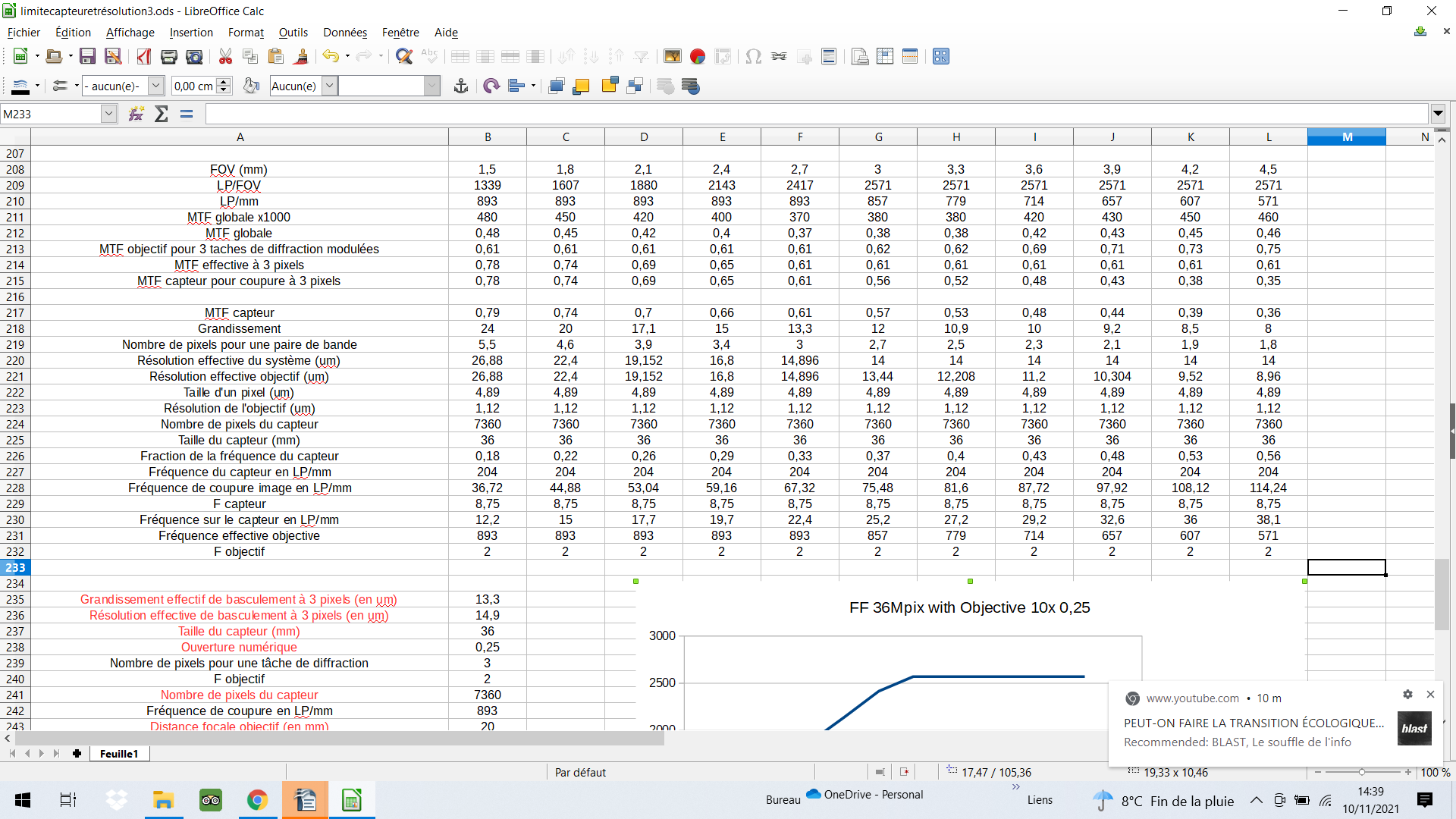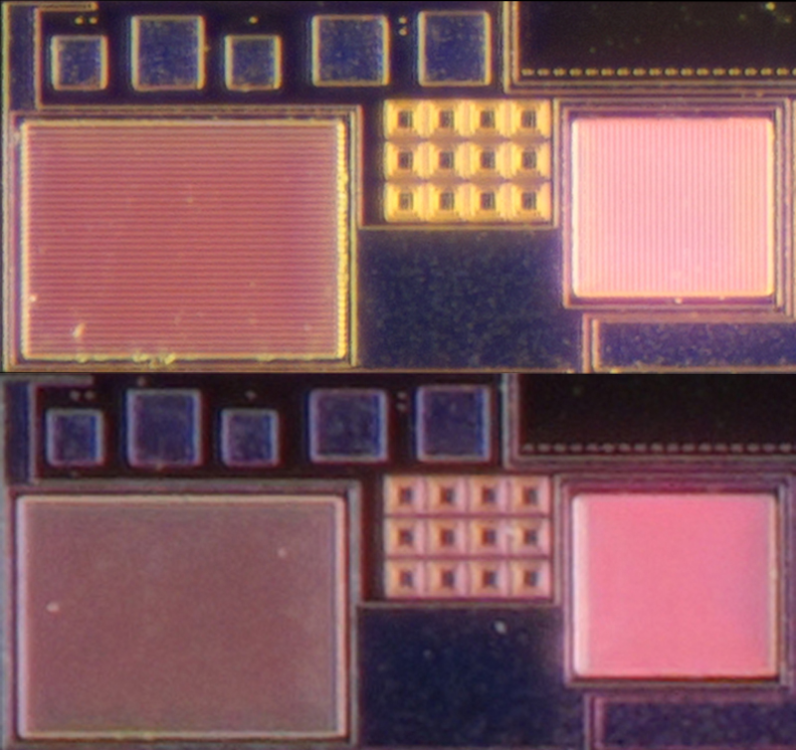Ploum, maybe it will help if you try thinking of me as an extremely dense student who needs to have everything spelled out.
In your spreadsheet, I see lots of numbers. But I do not see any formulas, so I am having to guess where the numbers came from. You say "Usual math" etc. But I cannot match your numbers using any math that I know. So I need some help.
Let me give one example of my confusion. In your spreadsheet, line 210 is labeled "LP/mm". I assume this means "line pairs per mm". The numbers range from 752 to 520, so I assume this is line pairs per mm on the subject. I see that https://www.microscopyu.com/techniques/ ... microscopy says Rayleigh resolution is 0.61*lambda/NA, and I see your spreadsheet says "Ouverture numérique 0,21". But with lambda = 0.00055mm, 0.61*lambda/0.21 gives 0.001598 mm, corresponding to 626 line pairs per mm. No match with 752. Using lambda = 0.0005 gives 688 line pairs/mm, better but still no match. To match 752 line pairs/mm would need lambda = 0.000458. That's a very unusual value, so I am not confident (to say the least). Where does the LP/mm 752 come from?
Another example... Let me assume that for smallest FOV, you have somehow chosen LP/mm to match the Rayleigh criterion. Then the MTF of the objective for that LP/mm will be only about 9% = 0.09, as it always is for Rayleigh. From that, I conclude that the overall system MTF = objective MTF * sensor MTF, can be no larger than 0.09. But Line 212 of your table, "MTF globale", shows a value of 0.42 . Now I am totally confused. How is the MTF globale 0.42 computed?
These are only examples. In general, I cannot figure out how most of the numbers in your spreadsheet might be computed.
I understand there are some language difficulties.
If you would like to post your spreadsheet, or send it to me some other way, then I will try to make sense of the formulas that I find in it.
But right now, all I see are some numbers that I cannot make sense of. (Anybody who can, please jump in and explain them to me.)
--Rik

